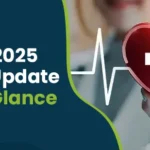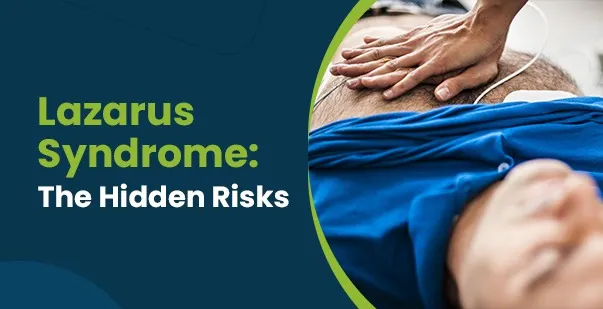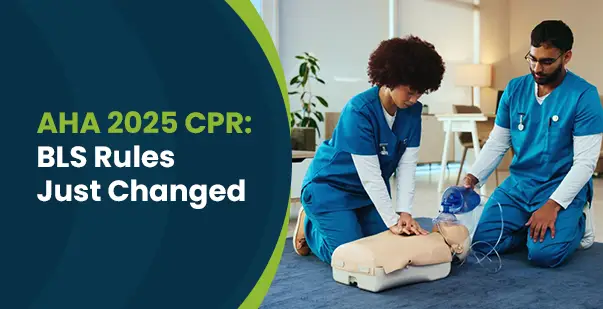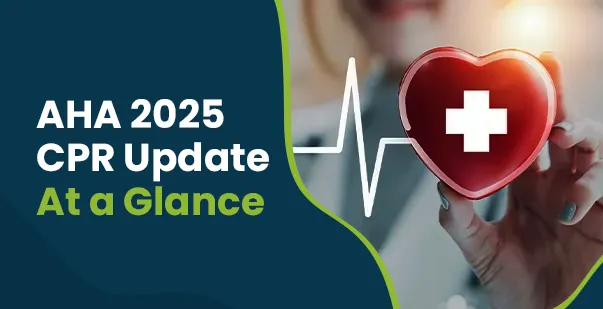Lazarus syndrome, or autoresuscitation, is a rare and mysterious medical phenomenon. It occurs when a person’s heart starts beating again after doctors have stopped resuscitation efforts. This unexpected return of circulation typically happens within minutes after CPR is stopped. While only around 76 cases have been documented worldwide as of 2024, this phenomenon continues to baffle doctors and scientists alike. Named after the biblical figure Lazarus, who was raised from the dead, the syndrome sparks intense curiosity and debate in the medical community.
But what happens after such a miraculous event? Many patients who experience Lazarus syndrome often face a range of underlying health issues, known as comorbidities, that may have played a role in both their near-death and revival. From chronic heart conditions to metabolic disorders, these comorbidities provide critical clues in understanding why this phenomenon occurs. In this article, we’ll explore the most common comorbidities linked to Lazarus syndrome and what they reveal about this medical mystery.
Why Understanding Lazarus Syndrome Comorbidities Matters?
Lazarus syndrome may be rare, but understanding the health conditions often associated with it is incredibly important for both patients and healthcare providers. Comorbidities like heart disease, electrolyte imbalances, or severe respiratory issues can not only contribute to the initial cardiac arrest but might also influence the unexpected return of circulation. By studying these conditions, doctors can better identify high-risk patients and possibly even anticipate or prevent such episodes.
Moreover, recognizing these underlying health issues can improve post-resuscitation care. Patients who “come back” after being declared dead often face serious complications, and early detection of related comorbidities can lead to better recovery outcomes. For researchers, these cases offer a unique window into how the human body behaves under extreme stress and how it defies medical logic.
7 Common Comorbidities Associated With Lazarus Syndrome
Lazarus syndrome is frequently seen in people who already have serious health issues, particularly those involving key organs, including the heart, lungs, and brain. The following are among the most common conditions observed in people who experienced Lazarus syndrome:
1. Cardiovascular Diseases
As Lazarus syndrome arises following failed resuscitation, the majority of patients suffer from an underlying heart problem. The most distinctive issues comprise elevated blood pressure, erratic heartbeats, and heart failure, all of which increase the likelihood of cardiac arrest.
This syndrome impacts blood circulation and might narrow the arteries, which can raise the threat of heart attacks and also strokes in many individuals. One possible explanation for Lazarus syndrome in cardiac patients is delayed drug effects—medications like epinephrine, commonly used during resuscitation, can take time to circulate properly.
Once CPR is stopped, the accumulated medication may finally take effect, restarting the heart. Additionally, air trapped in the chest (dynamic hyperinflation) during CPR can prevent proper blood flow. When pressure is released, normal circulation may resume.
A real-life case study was also conducted to show how the cardiac problems were connected to Lazarus Syndrome. Back in 2007, a 66-year-old individual was declared dead after 17 minutes of CPR following a heart attack. However, 10 minutes after resuscitation efforts stopped, his pulse returned. He was revived and later discharged in stable condition. Doctors suspected the combination of heart disease, CPR-related airway pressure, and delayed drug absorption contributed to his unexpected recovery.
Furthermore, the physicians may suggest periodic heart-related check-ups and lifestyle modifications to lessen these risks.
2. Respiratory Disorders
Many patients with Lazarus syndrome may have pre-existing respiratory disorders such as chronic obstructive pulmonary disease (COPD) or asthma.
These conditions cause inflammation in the lungs, obstruct the lungs and can lead to respiratory failure, which can make resuscitation efforts more complex. Additionally, respiratory infections in patients can reduce lung function, making resuscitation difficult. During resuscitation, if the lungs cannot provide enough oxygen, the heart remains deprived of the necessary energy to restart. Additionally, fluid buildup in the lungs (common in severe infections) can further block oxygen exchange, making resuscitation even more challenging.
These factors explain why patients with pre-existing cardiovascular and respiratory conditions are at a much higher risk of unsuccessful resuscitation. However, oxygen therapy and breathing exercises can help manage these symptoms.
3. Diabetes
Although diabetes is not directly linked to Lazarus syndrome, uncontrolled diabetes can severely damage the cardiovascular system, increasing the risk of cardiac arrest and complicating recovery. High blood sugar levels over time can lead to arterial stiffness, high blood pressure, and an increased likelihood of blood clots, all of which can trigger heart attacks or strokes.
Additionally, diabetes-related nerve damage (diabetic neuropathy) can impair the autonomic nervous system, making it harder for the heart to regulate its rhythm after resuscitation. Since diabetes also affects circulation and healing, recovery from a Lazarus syndrome event may be more challenging for these patients. To reduce these risks, managing blood sugar through proper diet, exercise, and medication is essential for long-term heart health.
4. Neurological Disorders
Prolonged cardiac arrest and resuscitation efforts can have a profound impact on the brain, as the brain is highly sensitive to oxygen deprivation (hypoxia). When the heart stops, the oxygen supply to the brain is cut off, and within minutes, brain cells begin to die. Even if resuscitation is successful, prolonged oxygen deprivation can lead to lasting neurological damage.
Some patients experience memory loss, difficulty concentrating, or cognitive impairment due to damage in areas like the hippocampus, which is important for learning and recall. Others may develop movement disorders, such as tremors or muscle stiffness, if the parts of the brain controlling motor function (like the basal ganglia) are affected. In severe cases, patients may suffer from post-anoxic encephalopathy, a condition that can cause confusion, speech difficulties, or even long-term coma-like states.
Recovery depends on factors such as the length of resuscitation, overall brain health, and how quickly oxygen circulation is restored. To improve neurological outcomes, therapeutic hypothermia (cooling the body after cardiac arrest) is sometimes used to reduce brain damage and improve the chances of a meaningful recovery.
Conditions such as epilepsy and Parkinson’s disease are also linked to the Lazarus sign. Earlier diagnosis and treatment can delay neurological deterioration and enhance daily functioning.
5. Mental Health Disorders
Experiencing a cardiac arrest and autoresuscitation can result in psychological distress. Anxiety, depression, and post-traumatic stress disorder (PTSD) are common among survivors. Near-death experiences can be deeply traumatic, leading to intense fear, intrusive thoughts, and even panic disorders.
Stress from managing multiple conditions can worsen mental health. Therapy, medication, and support groups can help people cope with these issues.
6. Kidney Diseases
Patients with chronic kidney disease (CKD) are more likely to experience imbalances in fluids and high blood pressure, both of which raise the risk of cardiac arrest. Since kidney function is essential for balancing the body’s fluids and electrolytes, impaired kidney function can make recovery more difficult following resuscitation.
7. Autoimmune Disorders
Although not directly involved with Lazarus syndrome, autoimmune conditions like rheumatoid arthritis and lupus weaken the immune system and contribute to overall health decline. These disorders cause the immune system to attack healthy tissues, leading to pain and inflammation.
Inflammation in the cardiovascular system can stiffen arteries, increase clotting risks, and disrupt heart rhythms, making resuscitation more difficult.
Additionally, they may increase susceptibility to infections, which can complicate post-resuscitation recovery. Patients with autoimmune conditions are also more prone to infections due to a compromised immune system, which can increase complications after resuscitation. Immunosuppressive therapy and anti-inflammatory medications are often used for treatment.
Read More: First Aid for Frostbite: Causes, Symptoms, and Treatment
What Causes the Lazarus Effect?
Lazarus syndrome is a rare and poorly understood phenomenon where a person’s heart starts beating again after failed CPR. Experts do not know exactly why this happens, but several theories attempt to explain it. Below are the possible causes, with detailed explanations.
1. Air Trapping in the Lungs
Air trapping is the most widely accepted explanation for Lazarus syndrome. It is more common in people with chronic obstructive pulmonary disease (COPD).
When a person receives CPR, air is forced into the lungs to help with breathing. If this air is pushed in too quickly, the lungs do not get enough time to exhale fully. As a result, air gets trapped inside. This buildup of air increases the pressure inside the chest (called intrathoracic pressure).
When the pressure becomes too high, it affects the blood flow in the body. The veins that carry blood to the heart get compressed, making it difficult for blood to return to the heart. Without enough blood, the heart struggles to pump properly, leading to a stoppage of circulation and cardiac arrest.
When CPR is stopped, the trapped air slowly leaves the lungs. As the pressure inside the chest decreases, blood starts flowing back to the heart. This can restart circulation, making it appear as if the heart has started beating on its own.
2. Delayed Medication Delivery and Action
During CPR, emergency medications are often given to help restart the heart. These drugs are usually injected into a vein in the arm or leg, but they must reach the heart to work properly.
If air trapping has caused a blockage in circulation, the medications may not reach the heart in time. The blood flow is too weak to carry the drugs where they are needed.
However, once air trapping is relieved and normal circulation resumes, the medications can finally reach the heart. If they are effective, they may help restore a heartbeat, leading to spontaneous circulation. For instance, a review highlighted that the delayed action of drugs administered intravenously to peripheral vessels might cause the Lazarus phenomenon. While specific case studies detailing medication delays leading to autoresuscitation are limited, this mechanism is recognized in medical literature as a plausible explanation for some instances of the Lazarus phenomenon.
3. Auto-PEEP (Positive End-Expiratory Pressure)
Another possible reason for Lazarus syndrome is auto-PEEP. This happens when air pressure remains too high in the lungs after breathing out. It is similar to air trapping but is often linked to problems in mechanical ventilation or ineffective CPR techniques.
When auto-PEEP occurs, the excessive pressure in the chest affects the heart’s ability to fill with blood. This can cause temporary cardiac arrest.
When CPR stops, the trapped air slowly exits, reducing the pressure in the chest. This allows the heart to refill with blood and restart its function.
4. Delayed Electrical Activity in the Heart
Some experts believe that Lazarus syndrome may happen due to delayed electrical activity in the heart. Even after a person appears lifeless, their heart may still have weak electrical signals that are too faint to detect. If given time, these signals may gradually strengthen, leading to a spontaneous return of circulation. A systematic study emphasized that in most cases of the Lazarus phenomenon, the observed rhythms at cardiac arrest were non-shockable, suggesting that delayed or residual electrical activity could play a role in autoresuscitation.
5. Blood Flow Redistribution
Experts propose two main physiological explanations for the spontaneous return of circulation in Lazarus syndrome: delayed electrical activity in the heart and blood flow redistribution after CPR stops.
- Delayed Electrical Activity: Even after a person appears lifeless, weak electrical impulses may still be present in the heart, but they are too faint to produce a detectable heartbeat. If given time, these signals might gradually strengthen, eventually triggering a spontaneous return of circulation.
- Blood Flow Redistribution: During CPR, blood flow may be unevenly distributed due to weak heart function or poor vascular response. Some areas of the body might receive more blood, while others, including the heart, receive less. Once CPR stops, blood may slowly redistribute, improving circulation to the heart and allowing it to restart. This theory aligns with cases where spontaneous circulation returns minutes after CPR ends, suggesting that restoring proper blood flow plays a key role.
While both theories explain different aspects of Lazarus syndrome, they may also work together. A delay in electrical activity, combined with gradual blood redistribution, could create the conditions necessary for autoresuscitation to occur.
Lazarus Syndrome: Managing Comorbidities for a Healthier Life
Lazarus syndrome is a rare phenomenon. It is more likely to occur in patients with existing health conditions, especially heart, kidney, and lung diseases. Other factors, such as neurological disorders, metabolic imbalances, drug effects, and circulatory issues, may also play a role. Understanding these comorbidities can help doctors manage patients more effectively and improve their chances of survival.
While Lazarus syndrome is rare, it raises important medical and ethical questions. Doctors and researchers continue to study this condition to learn more about its causes and effects.
Frequently Asked Questions (FAQs)
How do doctors confirm Lazarus syndrome?
Lazarus syndrome is when a person suddenly starts to show signs of life after being declared dead. The signs are sudden, unexpected movements, like breathing or a heartbeat.
This can happen even after doctors have confirmed the person’s death. Medical staff may notice the person’s skin color changing, or their chest might rise and fall. Lazarus syndrome is very rare, and it can occur hours after death.
If someone shows signs of life after being declared dead, doctors will perform further tests to confirm whether it’s a genuine recovery or not.
What causes the Lazarus effect?
The Lazarus effect happens when a person’s heart stops beating, but blood flow continues in the body for a while. In some cases, CPR or other methods may restart the heart after some time.
However, the medical Lazarus effect is not fully understood. Some doctors believe it might be due to changes in the body’s blood pressure, oxygen levels, or the shock during resuscitation. Other theories suggest that it could be a medical anomaly, where the body naturally regains function after death.
More research is needed to understand what causes this rare event.
How many cases of Lazarus syndrome are there?
Lazarus syndrome is very rare, with only a small number of reported cases worldwide. Experts believe it happens in about 30-40 documented instances. These cases typically occur after patients are declared clinically dead, often following cardiac arrest.
Despite its rarity, the syndrome has been studied in medical journals and is considered an unusual medical phenomenon.
The exact number of cases is hard to determine, as many are not always documented properly. It is important to note that Lazarus syndrome is not common, and most patients do not experience this after death.
Does anyone survive the Lazarus effect?
Survival after Lazarus syndrome is extremely rare. Most patients do not recover fully, even if they show signs of life. In some cases, the sudden revival is short-lived, and the person may pass away again shortly after. However, there have been a few rare instances where individuals have survived the Lazarus effect. These survivors often experience serious medical complications.
Their recovery may depend on the cause of their initial cardiac arrest, how quickly they received treatment, and the health of their organs before the incident. Survivors of Lazarus syndrome are very few and not well-documented.









